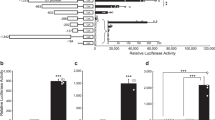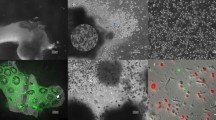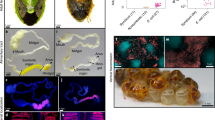Abstract
CULTURED mammalian cells are finding increasing use as a basis for conducting physiological and biochemical investigation outside the organism. Insect cell lines have originated from primary explants of embryonic tissue or tissues from larval and pupal stages of the donor. Cells from primary explants of embryonic tissue from the fruit fly, Drosophila melanogaster; the mosquito, Aedes aegypti; leaf hoppers, Agallia constricta and A. quadripunctata; and cockroaches, Periplaneta americana and Blabera fusca, continued to multiply and were subcultured1–4. Primary cultures of larval tissues from, the silkworm, Bombyx mori; the rice stem borer, Chilo suppressalis; and mosquitoes, Aedes aegypti, A. albopictus and Anopheles stephensi, were subcultured and developed into cell lines5–11. Cells originating from pupal ovaries of the moth, Antheraea eucalypti, have also been established as a cell line12. This article reports the first successful establishment of a cell line derived from adult tissue of the cabbage looper, Trichoplusia ni.
This is a preview of subscription content, access via your institution
Access options
Subscribe to this journal
Receive 51 print issues and online access
$199.00 per year
only $3.90 per issue
Buy this article
- Purchase on Springer Link
- Instant access to full article PDF
Prices may be subject to local taxes which are calculated during checkout
Similar content being viewed by others
References
Horikawa, M., Ling, Lee-Nien, and Fox, A. S., Nature, 210, 183 (1966).
Peleg, J., Virology, 35, 617 (1968).
Chiu, Ren-Jong, and Black, L. M., Nature, 215, 1076 (1967).
Landureau, J. C., Exp. Cell Res., 50, 323 (1968).
Vago, C., and Chastang, S., Experientia, 14, 110 (1958).
Gaw, S., Liu, N. T., and Zia, T. U., Acta Virol., 3, Suppl. 55 (1959).
Grace, T. D. C., Nature, 211, 336 (1966).
Grace, T. D. C., Nature, 216, 613 (1967).
Mitsuhashi, J., Nature, 215, 863 (1967).
Singh, K. R. P., Curr. Sci., 36, 506 (1967).
Schneider, I., J. Cell Biol., 42, 603 (1969).
Grace, T. D. C., Nature, 195, 788 (1962).
Yunker, C. E., Vaughn, J. L., and Cory, J., Science, 155, 1565 (1967).
Author information
Authors and Affiliations
Rights and permissions
About this article
Cite this article
HINK, W. Established Insect Cell Line from the Cabbage Looper, Trichoplusia ni. Nature 226, 466–467 (1970). https://doi.org/10.1038/226466b0
Received:
Revised:
Issue Date:
DOI: https://doi.org/10.1038/226466b0
This article is cited by
-
Insect cell culture vis-à-vis insect pest control
Egyptian Journal of Biological Pest Control (2023)
-
A database of crop pest cell lines
In Vitro Cellular & Developmental Biology - Animal (2022)
-
Biological, morphological, and molecular characterization of the baculovirus PlxyMNPV_LBIV-11, and its virulence towards Plutella xylostella, Trichoplusia ni, and Spodoptera frugiperda larvae
Archives of Microbiology (2022)
-
Inhibition of dicer activity in lepidopteran and dipteran cells by baculovirus-mediated expression of Flock House virus B2
Scientific Reports (2019)
-
Production of isotope-labeled proteins in insect cells for NMR
Journal of Biomolecular NMR (2018)
Comments
By submitting a comment you agree to abide by our Terms and Community Guidelines. If you find something abusive or that does not comply with our terms or guidelines please flag it as inappropriate.



